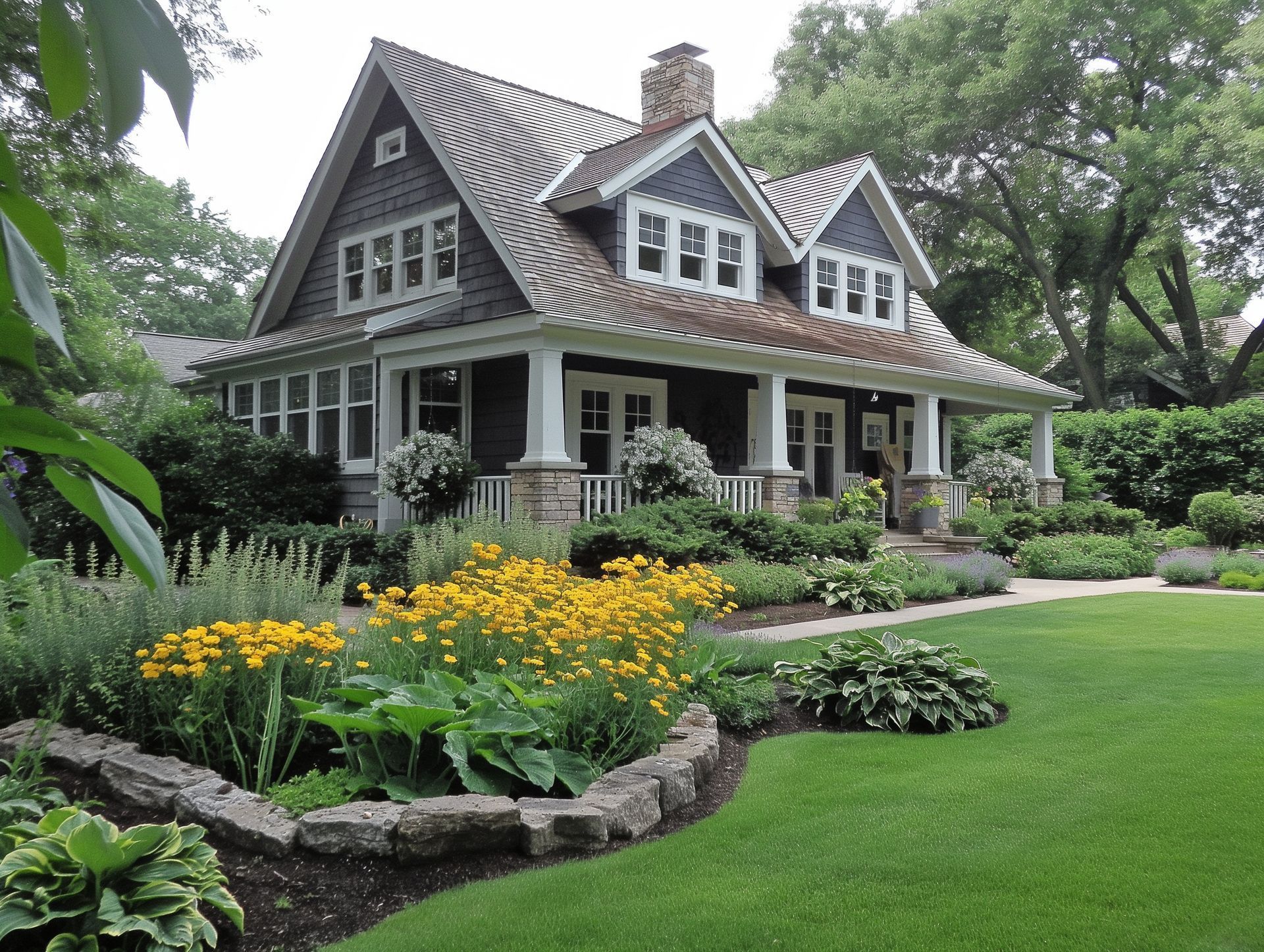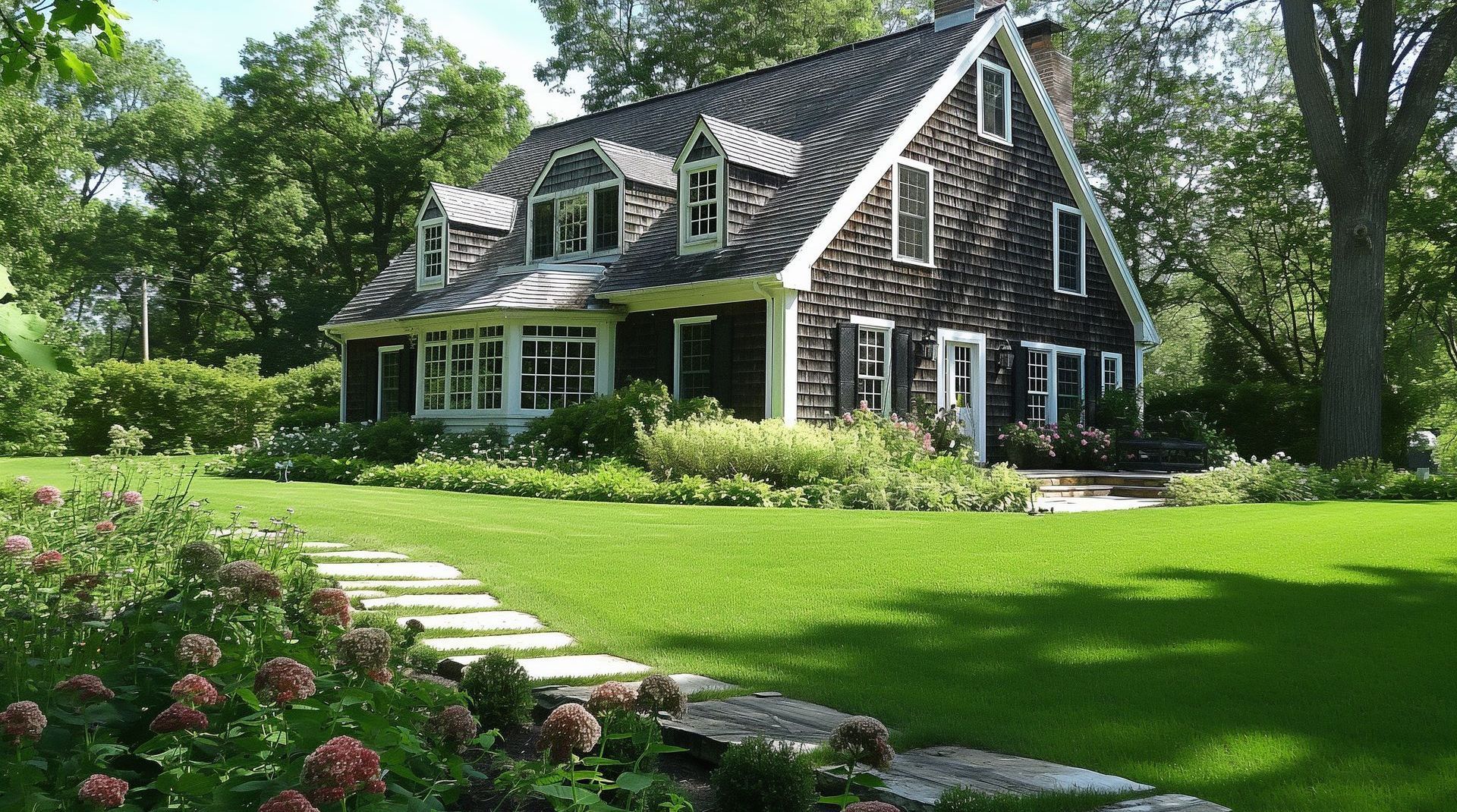Landscape Design Tips for Cape Cod Style Homes in MN
With their charming simplicity and timeless appeal, Cape Cod-style homes have found their way into the hearts of many Minnesota homeowners.
These quaint dwellings, originally designed to withstand the harsh coastal climate of New England, are equally well-suited to the challenging weather conditions of the North Star State.
Adapting Cape Cod style MN landscape design requires a thoughtful approach that honors the home's architectural heritage while embracing the unique characteristics of Minnesota's environment.
This article explores landscape design tips explicitly tailored for Cape Cod-style homes in Minnesota. It offers insights into creating beautiful and functional outdoor spaces and enhancing the inherent charm of these beloved homes while thriving in the local climate.
Embracing Traditional Elements with a Minnesota Twist
When approaching Cape Cod-style MN landscape design, starting with the traditional elements that define this classic look is essential.
White picket fences, neatly trimmed hedges, and symmetrical plantings
are Cape Cod's landscaping hallmarks. However, these elements can be adapted to suit Minnesota's climate and
native flora
.
Instead of the boxwoods commonly used in traditional Cape Cod landscapes, opt for hardy, cold-resistant shrubs like dwarf
Korean lilac
(Syringa meyeri 'Palibin') or compact
American arborvitae
(Thuja occidentalis 'Smaragd'). These can be trimmed to
create the neat, formal hedges characteristic of Cape Cod style
while withstanding Minnesota's frigid temperatures.
Symmetry is key in Cape Cod design, so plan your landscape with balance in mind. Create mirror-image plantings on either side of your home's entrance or driveway. Use native perennials like black-eyed Susans (Rudbeckia hirta) or purple coneflowers (Echinacea purpurea) to add pops of color while maintaining a structured look.
Creating Year-round Interest in Native Plants
One of the challenges of landscaping in Minnesota is maintaining visual interest throughout the year, especially during the long winter months. When developing your Cape Cod-style MN landscape design, focus on incorporating native plants that offer year-round appeal.
For spring and summer color, consider planting native wildflowers like wild columbine (Aquilegia canadensis) or butterfly weed (Asclepias tuberosa) . These not only add vibrant hues to your landscape but also attract pollinators, enhancing the ecological value of your garden.
As autumn approaches, incorporate plants that offer stunning fall foliage. The native sugar maple (Acer saccharum) provides a spectacular show of red and orange leaves, while the sumac (Rhus typhina) offers striking red foliage and exciting texture throughout the winter.
For winter interest, focus on plants with attractive bark or exciting structures . The red-twig dogwood (Cornus sericea) offers brilliant red stems that stand out against the snow, while ornamental grasses like little bluestem (Schizachyrium scoparium) provide texture and movement even when dormant.
Remember to include evergreens in your Cape Cod-style MN landscape design. Dwarf varieties of spruce or pine can provide year-round structure and color without overwhelming a Cape Cod home's modest scale. Plant these in groups of odd numbers for a natural, balanced look .
By carefully selecting native plants that offer interest in different seasons, you can create a landscape that remains visually appealing throughout the year, even in Minnesota's challenging climate .
Incorporating Functional Outdoor Living Spaces
Cape Cod homes are known for their efficient use of space, and this principle should extend to your landscape design. When planning your Cape Cod-style MN landscape design, focus on creating functional outdoor living areas that complement your home's architecture and maximize usable space.
Consider adding a spacious rear deck or patio that extends your indoor living area. Use materials that complement your home's exterior, such as natural stone or brick pavers . For a more budget-friendly option, stamped concrete can mimic the look of these materials while offering excellent durability in Minnesota's freeze-thaw cycles.
Consider adding a spacious rear deck or patio that extends your indoor living area. Use materials that complement your home's exterior, such as natural stone or brick pavers . For a more budget-friendly option, stamped concrete can mimic the look of these materials while offering excellent durability in Minnesota's freeze-thaw cycles.
Create distinct zones within your outdoor living space to accommodate different activities. A dining area with a pergola overhead can provide shade during summer meals and support climbing plants like hardy kiwi (Actinidia arguta) or American wisteria (Wisteria frutescens), adding beauty and functionality to your landscape.
To extend the usability of your outdoor space into cooler months, incorporate a cozy seating area around a fire pit or outdoor fireplace . Choose furniture and accessories that echo your Cape Cod home's simple, classic style, such as Adirondack chairs or wicker seating with crisp, nautical-inspired cushions.
Remember to include practical elements like outdoor storage or a potting area. A small sh ed that matches your home's architecture can provide valuable storage space while adding charm to your landscape. Paint it in colors that complement your home's exterior to create a cohesive look.
Maximizing Curb Appeal with Classic Coastal Elements
The front yard of a Cape Cod-style home plays a crucial role in creating that quintessential coastal charm, even in landlocked Minnesota. When developing your Cape Cod-style MN landscape design, focus on elements that
evoke a seaside feel while remaining practical for the local climate.
Start with a welcoming front walkway. Instead of a straight path, consider a gently curved walkway made of brick or bluestone. Edge the path with low-growing perennials like creeping phlox (Phlox subulata) or hardy geraniums (Geranium sanguineum) to soften the lines and add color.
Incorporate classic coastal elements like weathered wood or nautical accents. A driftwood sculpture or a repurposed boat as a planter can add whimsical touches to your landscape. Just be sure to choose materials that can withstand Minnesota's harsh winters or plan to store them indoors during the coldest months.
Window boxes are a hallmark of Cape Cod-style homes. Install boxes beneath front windows and fill them with cascading plants like trailing lobelia (Lobelia erinus) or sweet alyssum (Lobularia maritima) in summer. Replace these with hardy evergreen boughs and red-twig dogwood branches for a festive look in winter.
Consider adding a flag pole to your front yard, a common feature in traditional Cape Cod landscapes. This adds vertical interest and allows the displaying of the American flag or seasonal banners.
Implementing Sustainable Practices in Your Landscape

Sustainability is an increasingly important consideration in modern landscape design, and it can be seamlessly integrated into your Cape Cod-style MN landscape design. By implementing
eco-friendly practices
, you can create a landscape that's not only beautiful but also environmentally responsible.
Start by incorporating rain gardens or bioswales into your landscape design. These features can help manage stormwater runoff, a common issue in Minnesota's climate. Plant these areas with native species that tolerate wet and dry conditions, such as Joe Pye weed (Eutrochium purpureum) or swamp milkweed (Asclepias incarnata).
Start by incorporating rain gardens or bioswales into your landscape design. These features can help manage stormwater runoff, a common issue in Minnesota's climate. Plant these areas with native species that tolerate wet and dry conditions, such as Joe Pye weed (Eutrochium purpureum) or swamp milkweed (Asclepias incarnata).
Consider installing a rain barrel or cistern to collect rainwater from your roof. This harvested water can irrigate your garden during dry spells, reducing your reliance on municipal water supplies. Disguise these functional elements with trellises or decorative screens that complement your home's architecture.
Implement xeriscaping principles in areas of your yard that receive full sun or are difficult to rinse. Use drought-tolerant native plants like prairie dropseed (Sporobolus heterolepis) or butterfly weed (Asclepias tuberosa) to create attractive, low-maintenance landscaping that requires minimal watering.
Timeless Cape Cod Charm
Designing a landscape for a Cape Cod-style home in Minnesota requires a blend of traditional elements with adaptations for the local climate.
By thoughtfully integrating these tips, you can achieve a beautiful, functional, and enduring landscape that complements your Cape Cod home.











